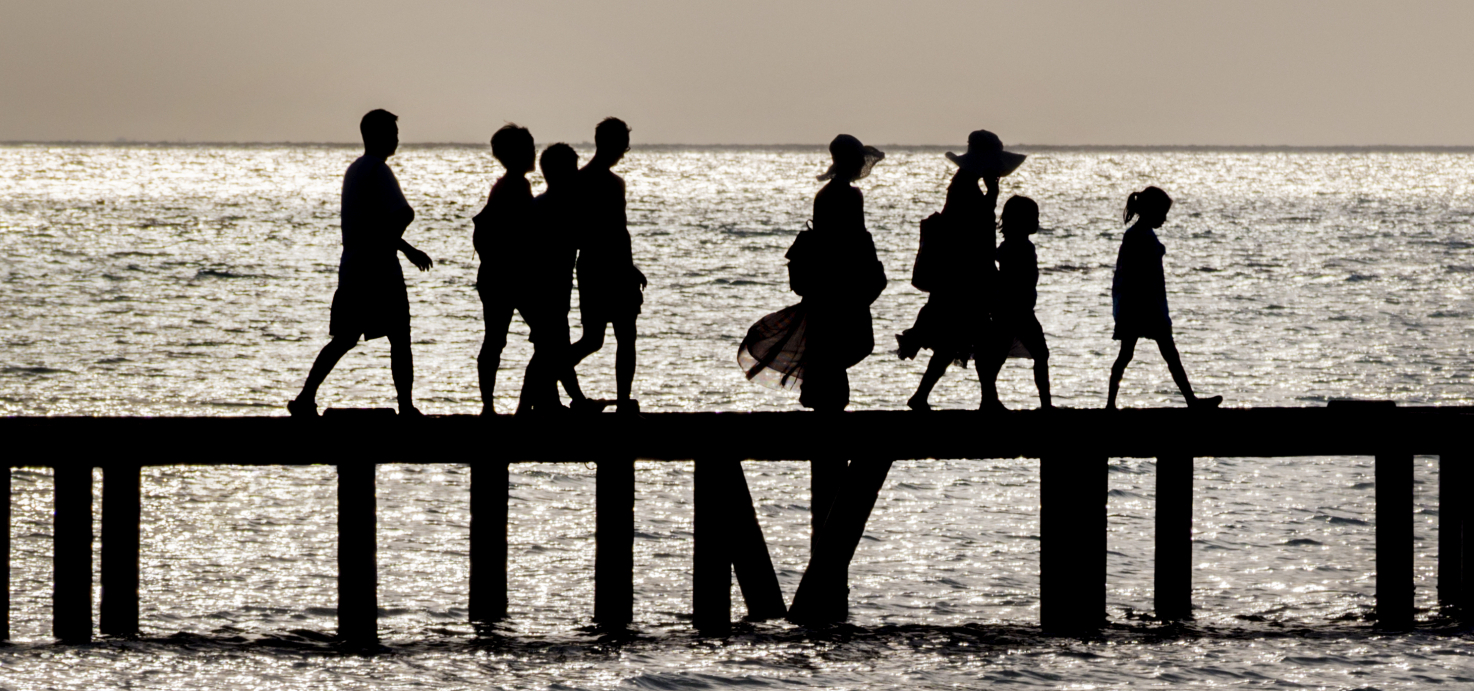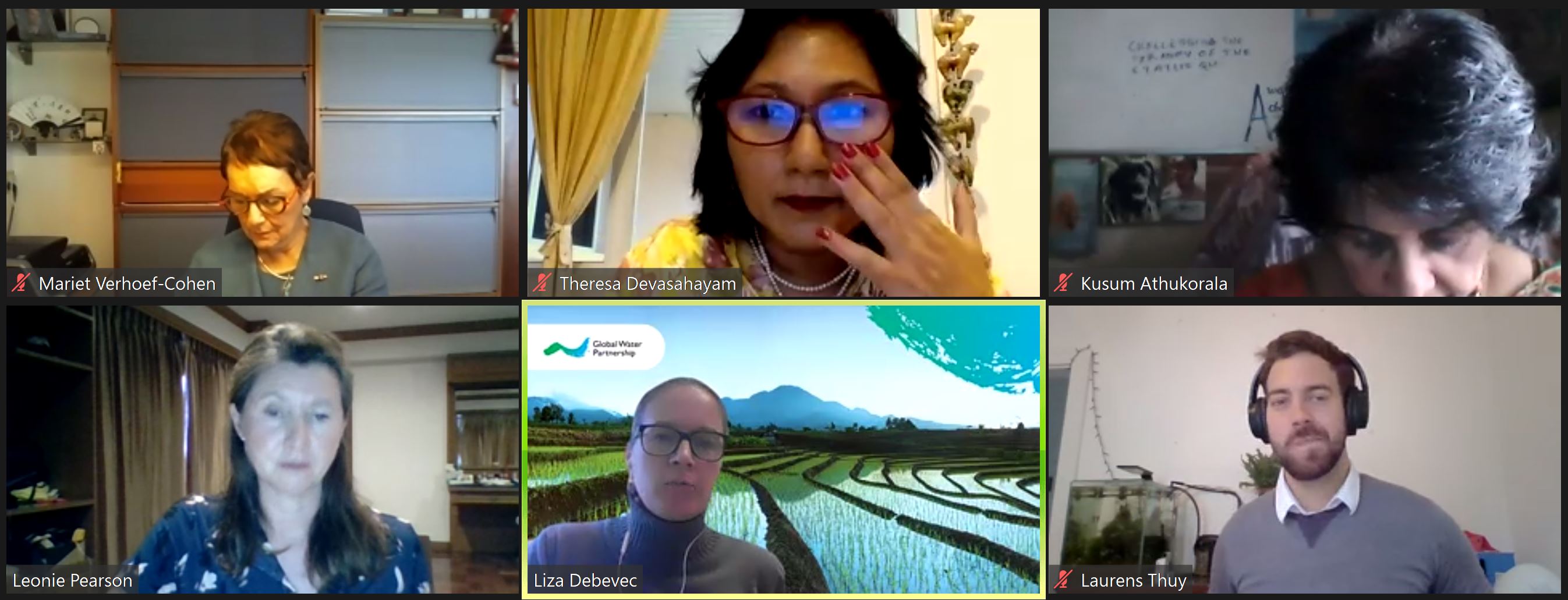In the past month, Women for Water Partnership (WfWP), in conjunction with its partners NetWwater (NWW) and Soroptimist International of the Southwest Pacific (SISWP), organised a series of eight webinars under the topic “Women Water Climate: Tackling the Challenges”. The series introduced case studies that reflect the nexus on women, water, and climate change, and the on-the-ground challenges and solutions taking place. The case presenters were joined by experts and young water professionals to explore 'the way forward' - on implementation, stakeholder relationships, and opportunities to re-create sustainable models to respond to different community needs.
Liza Debevec was one of the experts in the final session on 3 November. She liked the focus on capacity building and youth involvement that all the sessions brought in – it was a good mix of people that showcased the broad collaboration necessary for bringing in systematic change and new thinking. But she says that if we are to truly achieve gender equality one day, the work has to start with ourselves.
“We need to stop denying the existence of inequality and address the role we all play in perpetuating bad practices by not doing anything about the bad practices we witness in our day-to-day at work and private contexts. This is not something we can learn in a webinar or a one-day training, it is about continuous engagement in conversations, debates, educating ourselves, and learning,” says Debevec.
GWP launched its Gender Strategy in 2014, and in 2017, in collaboration with experts and practitioners from around the world, GWP introduced a Gender Action Piece. This identified four clear action areas – something that Debevec brought up in the webinar session and she firmly believes in.
Action area 1: Institutional leadership and commitment.
This is about making gender equality and inclusion a core business goal. Debevec says that for this statement to have true meaning, the leadership must really believe in changing - not just repeat empty words:
“This takes many uncomfortable conversations; it is not something that can be achieved through trainings or courses, it takes time and it is ongoing work. It takes recognizing bias and having discussion after discussion; it takes risks by giving women equal opportunities and being open to learn and grow. There are no quick fixes, you can’t successfully impose sustainable gender transformation.”
Action area 2: Gender and inclusion analysis that drives change
This is about conducting gender and inclusion analysis at all levels. Here Debevec adds that sex-disaggregated data must be collected on all levels and in all areas of our work. Not including women in the data sample results in having technical or policy solutions that may perpetuate gender inequality and even cause harm to certain population groups. It is equally important that the right questions are asked and that, in the case of surveys, they are asked in a language comprehensible to all the people in the sample.
"In 2020 we can no longer accept the argument that it is too costly or too difficult to do gender disaggregated data. We cannot exclude 50% of the population by only interviewing men," says Debevec.
Action area 3: Meaningful and inclusive participation in decision-making and partnerships
This is about adopting a ‘nothing about them without them’ approach. Debevec notes that institutions have to be careful to avoid making this a patronizing exercise.
“We have to focus programmatically on gender, but we have to remember that our projects aren’t an end in themselves, we need to focus on their impact. We have to get women to stand on their own – we are not empowering women, they empower themselves – and we don’t decide what’s good for them. We can create platforms where they are allowed to improve– leading to a chain of empowerment – but it is an active process with their involvement. We also have to ensure that everyone has the same opportunity to participate and don’t get marginalised. To put it bluntly, we cannot just bring a number of women into the room and assume that gets the job done, we need to create spaces where they can participate in the decision-making process in a meaningful way,” says Debevec.
Action area 4: Equal access to and control of resources
This is about creating a level playing field with respect to access to and control of resources, and breaking down legal barriers.
“Policies and laws that enable equal access are a must and many great policies are already in place. But social norms are often stronger than the laws themselves and this is why the implementation remains the biggest challenge. This adds and extra element to this action area,” says Debevec.
Since joining GWP in May 2020, Debevec has been mapping out gender needs and issues in the GWP network and wider water sector. Operationalising the Gender Action Piece is one of her core goals, and in the coming months we will be showcasing stories around the four action areas and related challenges.
The top photo is by mostphotos.com/Christian Delbert.
The inserted photo is captured from the Women Water Climate webinar on 3 November.


